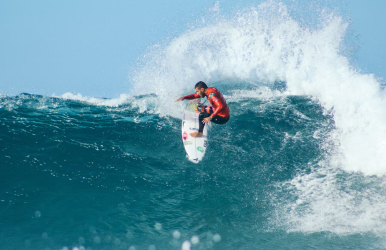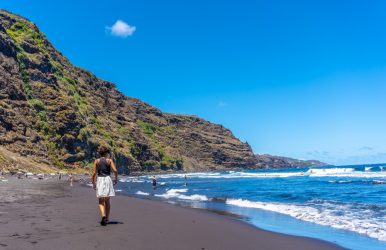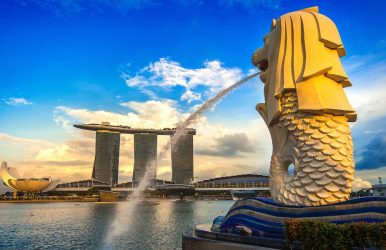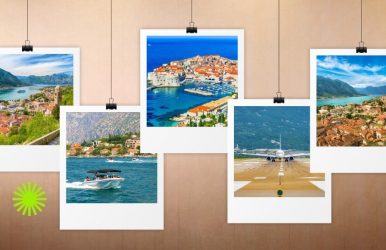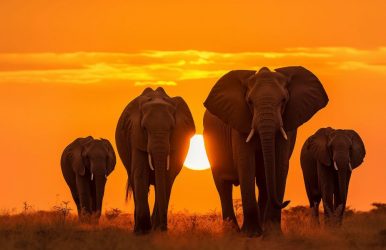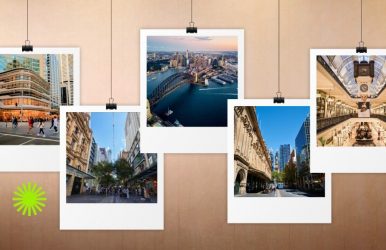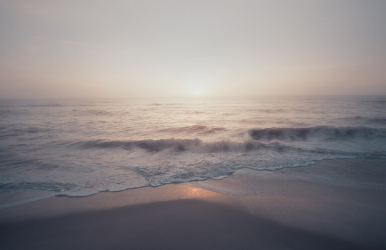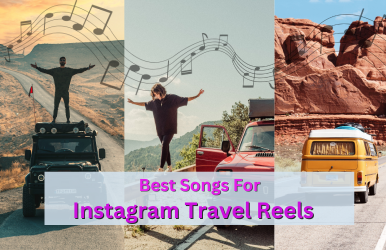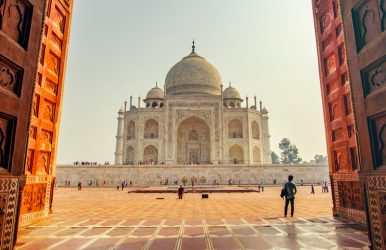What Are The Top Dive Sites In Raja Ampat, Indonesia? A Raja Ampat Dive Site Guide
BY Sibashree Dec 26, 2025
The Tourism Ministry of Indonesia has just released the Wonderful Indonesia Diving Directory. It has the most “reliable” information about the best diving sites in the country. Raja Ampat in Southwest Papua is featured in this directory. Raja Ampat, home to the one-of-a-kind Raja Ampat SEACAM Center (RASC), is the best underwater diving and photography destination on a budget. The RASC has Nikon Z8 and Canon 7D Mark II macro and wide-angle sets. Furthermore, the SEACAM accessories here, such as strobes, viewfinders, and dome ports, and trained photo guides will take your underwater photography experience to a new height. Moreover, Raja Ampat is located within the Coral Triangle off West Papua. So, the reef life here is the richest, and from seahorses to the titan triggerfish and hammerhead shark, you will understand what diversity is. So, no wonder that Raja Ampat, with its four main islands and around 1800 small islands, has been chosen by the New York Times as one of the must-visit destinations in the world. Raja Ampat Dive Site Guide: Navigating The Underwater Geography Of Raja Ampat Raja Ampat is an archipelago. At the same time, it is a massive amalgamation of three different diving zones. Now, which diving zone will be the best for you will depend on the kind of diving experience you want. For example, if you want to see marine biodiversity, Cape Kri in Central Raja Ampat (Dampier Strait) will be the best location. On the other hand, if you want to see pygmy seahorses, soft corals, and unique limestone formations, you will have to visit Boo Windows in South Raja Ampat (Misool). However, remember that many major diving sites are around 100-150 miles away from each other. So, if you are planning to stay in a central resort and plan Raja Ampat diving trips in the north and south regions in a day or two, it is not possible. There are three diving zones in Raja Ampat, namely: Central (Dampier Strait) North (Wayag & Kawe) South (Misool) 1. Central (Dampier Strait) The Dampier Strait Region has the most celebrated diving sites, such as Blue Magic and Cape Kri. It has the highest fish count, and the high-voltage current in the water here makes it the favorite of advanced divers. 2. North (Wayag & Kawe) The North zone has the most dramatic limestone landscape. The sites here are wild and pelagic-heavy. Here, you will find the famous Eagle Rock, and the lagoon views here are stunning. 3. South (Misool) South (Misool) is the capital of the soft coral. It is also home to Magic Mountain, the best Manta Ray site in the region. Furthermore, protected by a private marine reserve, Misool is suitable for spotting colorful sea fans and caves. What Are The Top Dive Sites In Raja Ampat Indonesia? The tourism industry of Raja Ampat is indeed coral-studded. Here are the top diving sites in Raja Ampat, Indonesia. 1. Central Raja Ampat (Dampier Strait) Dive Sites The Dampier Strait is famous for its biodiversity. Located between the Waigeo and Batanta islands, it functions as a massive source of nutrient-rich water. Furthermore, the strong current here is one of the main reasons behind an explosion of marine life. So, most resort-based divers prefer the Damier Strait region. • Cape Kri Dive Site Stats: Depth: 5m – 30m Current: Strong (Variable) Difficulty: Advanced (Drift) Lens Recommendation: Wide Angle Cape Kri has the highest number of fish species recorded on a single tank dive. You could spot as many as 374 species. Along with the numbers, the biomass here is also impressive. You will encounter massive schools of sweetlips, snapper, and fusiliers. Look out into the blue for grey reef sharks, barracuda, and passing dogtooth tuna. The coral garden at the top is pristine. Dive Strategy When you are in Cape Kri, you will have to find the split point. It is the place where the current hits the reef. When the guide drops you at the upstream, you will have to stay close to the reef for your safety. • Blue Magic Dive Site Stats: Depth: 10m – 30m Current: Medium to Strong Difficulty: Advanced Lens Recommendation: Wide Angle Blue Magic is located between Waisai and Kri Island. Its submerged pinnacle attracts a lot of pelagics. This is a small island, but it is home to a rich marine biodiversity. It also stands out because of the manta ray cleaning stations. Reef Mantas are common in the central region. However, Blue Magic is one of the rare places where you will meet a giant Oceanic Manta Ray with a wingspan of up to 7 meters. Furthermore, you will find the Wobbegong sharks under the coral ledges. Dive Strategy Blue Magic demands a unique entry. It is called a negative entry because here, you will have to roll back and descend immediately without surfacing. So, maintain an A-level in your fitness game. With a negative entry, you will not miss the reef. The dive ends in the blue, so good buoyancy control is essential for your safety stop. • Manta Sandy Dive Site Stats Depth: 5m – 18m Current: Mild to Medium Difficulty: Beginner/Intermediate Lens Recommendation: Wide Angle (or Fisheye) Manta Sandy is the best place in the Dampier Strait for spotting Reef Manta Rays. Its shallow and sandy slope with many large coral "bommies" functions as a cleaning station. Manta Interactions In Manta Sandy You have stay behind the strict line of rocks placed in the sand here. Then, you will spot the mantas circling around the cleaning station right in front of you. Stay calm and low and wait until they swoop over your head directly. This creates incredible photo opportunities. • Sardine Reef Dive Site Stats Depth: 5m – 25m Current: Strong Difficulty: Advanced Lens Recommendation: Wide Angle Ironically, Sardine Reef is not home to sardines. It has got such a name because fish are packed like sardines. The schools you will find here on this oval-shaped reef patch are Surgeonfish, Fusiliers, Butterflyfish, and Damselfish. Other marine life you will encounter here are Barracuda, Giant Trevallies, and Spanish Mackerel. Also, divers love Sardine Reef as it is home to rare species such as Oceanic Triggerfish, Napoleon Wrasse, and Bumphead Parrotfish. Why Is Sardine Reef A Photographer’s Dream? The life around the submerged oval reef is so dense that the schools of fish here can block the Sun. Furthermore, at this adrenaline-pumping drift dive, you will see a lot of hunting action on the current side. The Giant Trevallies and Tunas dart into balls of baitfish. Overall, the underwater scene is chaotic, colorful, and quintessential Raja Ampat! 2. South Raja Ampat (Misool) Dive Sites South Raja Ampat has a private Misool Eco Resort, but is primarily accessible by liveaboard. The underwater world is “different” in the truest sense. At the epicenter of the marine protected area, it has kaleidoscope-colored soft corals, massive sea fans, and dramatic topography. Here are the best dive sites in South Raja Ampat, Indonesia. • Magic Mountain (Shadow Reef) Dive Site Stats Depth: 7m – 30m+ Current: Variable (Can be strong) Difficulty: Intermediate to Advanced Lens Recommendation: Wide Angle You cannot make a diving itinerary in Misool without including Magic Mountain as a stop. This offshore ridge is located in the open sea. So diverse marine life is attracted toward it like a magnet. Also known as Karang Bayangan or the Shadow Reef, the Magic Mountain is located in the southeast of the Warakaraket Island. The Topography And Diving In Magic Mountain Magic Mountain looks like an underwater plateau mountain. Here, the steps go down a dozen times. This site is ideal for mid-level and expert divers. Marine life spotted here are: Napoleon Wrasse Surgeonfish Fusiliers Barracuda Jacks Grey Reef Sharks Yellow Snapper Turtles Wobbegong Sharks As you get off the diving board, you will notice a hard coral garden, and if you are lucky enough, you will notice a Pacific Manta Ray within minutes. When you are at least 25 meters down, you can go close to the ridge walls and find wonderful macro critters. You will also spot Pelagics and a wide variety of large fish. Overall, it is an ideal combination of large and small marine life. The Manta Bi-Highway Magic Mountain also comes with its cleaning station on a ridge, which is approximately 7 meters. Here, you will find one of the rarest Bi-Highways in the world. You will spot the giants of the open ocean, Oceanic Manta Rays and Reef Manta Rays, here. The sight is something dreams are made of! • Boo Windows Dive Site Stats Depth: 5m – 30m Current: Medium to Strong, Divers should be ready for drift diving Difficulty: Intermediate to Advanced Lens Recommendation: Wide Angle/Fisheye Boo Windows is one of the most photogenic diving sites in Raja Ampat. Here, you will find windows, which are actually swim-throughs into the reef. This site has a lot of reef fish, and you will love the large schools of fusiliers, batfish, and sweetlips here. Diving Through Boo Windows Divers usually enter the diving site on the west side of the large Boo Island. Here, you will go down the water straight and find the famous window. This is the spot where your camera can be at work. Now keep the reef on your left side and dive from the north end of the site and move toward the south. At 25 meters, you will meet the Red Tooth Trigger fish. It is an opulent sight, trust me! Here, you can end your diving or move east to find the face of the reef, or if the current favors, take a double back on the west side. • Four Kings Dive Site Stats Depth: 5m – 40m Current: Medium to Strong Difficulty: Advanced Lens Recommendation: Wide Angle "Four Kings" (Kaleja) have four submerged pinnacles, with a steep ascent from the depth of the water. Connected by a ridge, these four rocky outcrops almost look like a mountain range under the water. The deep canyons vary from 5 to 40 meters in depth, and they add more mystery to the underwater mountain-like structure. This diving site is filled with marine life. Imagine schools of batfish, fusiliers, and reef sharks doing a round of these ridges. Exploring The Pinnacles Of Four Kings Diving here begins with dropping deep on one of the pinnacles, and then you can spiral your way up. The rocky outcrops look beautiful with a cover of soft orange and purple corals. You will hardly notice any bare rock space. Furthermore, as you approach the pinnacles, you will find clouds of glassfish. Groupers and Trevallies gather here in search of prey. Unlike most sites, diving here is a vertical experience. So, you will feel like swimming through a live aquarium tower. 3. North (Wayag & Kawe) The Waigeo Island (NorthWest), Kawe Island, and Wayag constitute the diving areas in the north of Raja Ampat. The northern part of Raja Ampat is not typically ideal for diving. Still, divers love it for spotting wobbegong sharks, Eagle Rock, and manta rays. Furthermore, the diving sites in the north are a favorite of photographers due to the presence of microcritters. • Northwest Waigeo Island Dive Site Stats Depth: 10 to 40 Meters Current: Mild to Strong Difficulty: Intermediate to Advanced Lens Recommendation: Wide-Angle Lens, Strobes, and Macro Lens With highlight spots such as Mayalibit Bay, the northwest of Waigeo Island is home to white and black-tip reef sharks, pygmy seahorses, sea dragons, sea fans, Indian lionfish, green sea turtles, and more. Another highlight spot is the Alyui Bay. Here, you will find ghost pipefish and crustaceans. It is ideal for night dives. • Wayag Dive Site Stats Depth: 5-40 Meters Current: Mild Difficulty: Beginners to Advanced Lens Recommendation: Ultra-Wide Angle, Telephoto Zoom, and Standard Zoom The mushroom-shaped islands and the pristine lagoons make Wayag a favorite spot for diving and snorkeling. The Wayag lagoon is one such lagoon, and it further stands out as the nursery for the juvenile Manta Ray population. Furthermore, you will find colorful soft corals here and different species of sharks. Wobbegong sharks and blacktip reef sharks are the most popular among them. The unique rock formations here also help form a wide range of lagoons. So, it is also an ideal place for photography and kayaking. • Kawe Island Dive Site Stats Depth: 5-40 Meters Current: Mild to Strong (Ideal for Drift Dives) Difficulty: Beginners to Advanced Lens Recommendation: Wide-angle Fish Eye/Rectilinear Zoom Lens Famous for manta rays and a rich biodiversity, Kawe Island is also home to diverse schools of fish such as fusiliers, jack, and barracuda. The Kawe Islands are literally the equatorial islands, and the absence of homestays and land-based resorts makes the area pristine. As you go deeper, you will come across a labyrinth of massive boulders. These boulders have a cover of soft corals in a citrus color. This is a favorite of wobbegong sharks as their color matches the covering. So, Which Diving Site Should You Choose In Raja Ampat? A Comparison Summary Of The Diving Sites Here is a comparison summary of the top dive sites in Raja Ampat, Indonesia. Traveler TypeTop Dive Sites In Raja Ampat Beginners• Kawe Island• Manta Sandy• WayagThe Adrenaline Junkie• Cape Kri• Blue MagicThe Manta Lover• Manta Sandy (Central)• Magic Mountain (South)The Photographer (Wide)• Boo Windows• Cape KriThe Snorkeler• Manta Sandy Resort Vs. Liveaboard: How To Choose The Best Accomodation For Diving Enthusiasts? Your choice between resorts and liveaboards as accommodations will depend on the part of Raja Ampat you want to access. 1. Choosing A Resort If you want to dive around the Central Raja Ampat or Dampier Strait sites, you can stay in resorts. Kri, Waigeo, and Gam islands have the highest concentrations of resorts in Raja Ampat. Furthermore, if you are staying in these resorts, you will have easy access to the famous Dampier Straits. However, access to Wayag and Misool will be difficult. Still, if you are in Misool, you will have access to the Misool Eco Resort. It is the only resort operator in the south, and it will give you exclusive access to Misool's sites without a liveaboard. 2. Choosing A Liveaboard If you want to experience the best of all the diving zones, a liveaboard will be the best option. It will give you access to the Central region as well as Wayag in the north and Misool in the southern region. A liveaboard is the best way to dive Cape Kri, Eagle Rock, and Magic Mountain all in one vacation. A Raja Ampat Dive Site Guide: Things To Do Apart From Diving A Sacred Region With The Prevailing Sound Of Underwater! This is how I would describe the diving sites of Raja Ampat. The underwater region of Raja Ampat is as vivid as you can think of. From the sound of rice crispies made by the hidden shrimps in the corals to the fish, such as rabbitfish, unicornfish, and batfish, all the colors in the palette are present underwater. Also, don’t forget the hawksbill turtles, tearing up hard corals in search of the soft sponge inside. Furthermore, as National Geographic rightly points out, 75% of the world’s corals are present here, and the water here has over 1500 fish species. Moreover, half of the region is a network of marine protected areas (MPAs), and the Dampier Strait is at the epicenter. Floating In Indonesia’s Traditional Wooden Pinisi Boats The underwater world of Raja Ampat is like a lingering lullaby. When you are not diving, you can take a ride on the traditional wooden pinisi boats of Indonesia. These boats are made with hands on the South Sulawesi beaches, and this craftsmanship is designated as an intangible cultural heritage of UNESCO. Listening To The Dawn Chorus When you are staying in a boat overnight, especially in the Dampier Strait, you will wake up to the deafening chorus of the sea eagles, the red birds of paradise, and other feathery friends. And you never know when a crocodile or a blacktip reef shark comes close to your boat and keeps an eye on you. Visiting The Sacred Waters Of Raja Ampat The waters of Raja Ampat are not just ideal platforms for diving and spotting marine wildlife. Some areas, such as Mayalibit Bay, are associated with tribal legends. In a mountain cave, the bones of the ancestors are preserved. Also, the local tribes worship nature at the Kali Biru river. This part of Raja Ampat has started getting tourists for the last few years now, and the history and sacred beliefs around this place are associated with the King of Waigeo and the Mayan tribe. These Mayan warriors used to worship at the Kali Biru river and connect to the God before going to war. The families of local people still gather here around the river, wearing a headgear made of junglefowl feathers, dried sago palm leaves, bright red berries, shells, and other natural elements. What Is The Best Season For Diving In Raja Ampat, Indonesia? Most guides mention Raja Ampat as a year-round diving destination. Let me tell you, it’s not true. Probably, none of them has been to the southern parts of Raja Ampat to know that the southern sites only remain suitable for diving in a particular season. Here is a seasonal breakdown of the best season for diving in Raja Ampat. SeasonsDiving ConditionsThe Prime Season (October to April)• Dry Season• Calm Water• High Visibility• Manta Numbers at Peak• Ideal for diving the Full North-to-South Liveaboard RouteThe "Windy Season" (June – September)• Strong Winds and Waves due to the Southwest Monsoon• Crossing to Misool (South) Becomes Dangerous and Often Impossible. So, to sum up, Do not book a trip in July/August expecting to dive Magic Mountain. The Central (Dampier Strait) region is suitable for diving throughout the year. It is so because of the protection of the islands of Waigeo and Batanta. So, even in the windy months, Cape Kri and Blue Magic will be good for diving. In fact, there will be fewer crowds to enjoy the underwater scene. Practical Tips For Diving Raja Ampat: Diving Conditions & Safety Gear Have you heard of Indonesian Throughflow? It is a powerful water movement feeding the underwater reefs. The water movement ensures that the reefs remain nutrient-rich and that marine animals gather around the reefs. However, this powerful movement also causes a strong current in the water. So, at almost every diving site in Raja Ampat, you will notice a drift along a reef. However, at points like Blue Magic, there will be more challenging washing machines or downdrafts. At these sites, you must listen to your dive guide as they can assess the power of the current from the water's surface. Nevertheless, thanks to the changing current conditions, you will need the following diving gear. 1. Reef Hook Suppose you are diving in Cape Kri and you have reached the split point. Now, these split points, home to diverse schools of fish, also have the strongest current. Now, you will use your reef hook on a dead piece of rock. This allows you to "fly" in the current and watch the show without exhausting your air supply. 2. DSMB Or Delayed Surface Marker Buoy If you are diving in sites that are offshore pinnacles, you can drift away from the reef. You can even get separated from your diving group. In such cases, use a delayed surface marker buoy or DSMB so that the tender boat can find you even in the choppy water. 3. Wetsuit A 3mm long wetsuit is ideal. The water temperature remains around 28°C–30°C. However, there are chances of potential thermoclines, especially during repeated dives. The wetsuit will also protect you from hydroids and stinging plankton. A Raja Ampat Dive Site Guide: Sustainable Diving And Marine Conservation With a network of nine marine protected areas (MPAs), Raja Ampat demands a sustainable diving community-based marine conservation. 1. Sustainable Diving People associated with tourism businesses in Raja Ampat and diving operators and diving resort owners have joined the local community to ensure marine conservation by using sustainable practices and equipment. They also teach the consumers and tourists and the customers about environment-friendly practices. 2. Community-Based Marine Conservation The local communities of Raja Ampat play an important role in the protection of the diving sites in Raja Ampat and the overall marine conservation. People from this local community monitor the coral reefs and they educate tourists about why protecting the marine life is important. Top Dive Sites In Raja Ampat: Frequently Asked Questions (FAQs) Here are the frequently asked questions and answers about the top dive sites in Raja Ampat. 1. What Is The Deepest Dive In Raja Ampat? It is difficult to pick a single name for the deepest dive in Raja Ampat. The average depth of the top diving sites in Raja Ampat is around 10 to 40 meters. Still, Cape Kri and Blue Magic are some of the deepest diving sites in Raja Ampat. Cape Kri is famous for reef sharks, and Blue Magic has Mantas, Tunas, and Trevallies. 2. Which Is A Better Diving Experience, Palau Or Raja Ampat? Palau offers the best liveaboard experience. However, if you want to experience better marine biodiversity, drift diving, and macro photography opportunities, Raja Ampat wins the race by miles.Also, if you want to see historical wrecks, you can choose Palau with the World War II wrecks hidden under the water. 3. Is Diving Raja Ampat Beginner-Friendly? Yes, Raja Ampat has many diving sites, such as Blue Magic and Manta Sandy, which are ideal for beginners. Calm and warm waters in these sites offer ideal diving conditions for beginners. Furthermore, the shallow reefs ensure that you can spot marine life and corals just below the surface. Moreover, reputable diving centers in Raja Ampat, such as Gangga Divers at Papua Paradise and Papua Diving Resorts, offer personalized assistance to beginners. Read Also: Is Amed Bali Worth Visiting? (Location, How To Reach, Things To Do, Nightlife, And More) Is Munduk Bali Worth Visiting? (Direction, Things To Do, Unique Attractions, And More) Bali vs Thailand: Which Place is Better?


